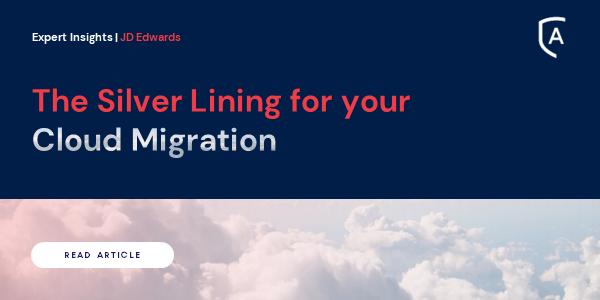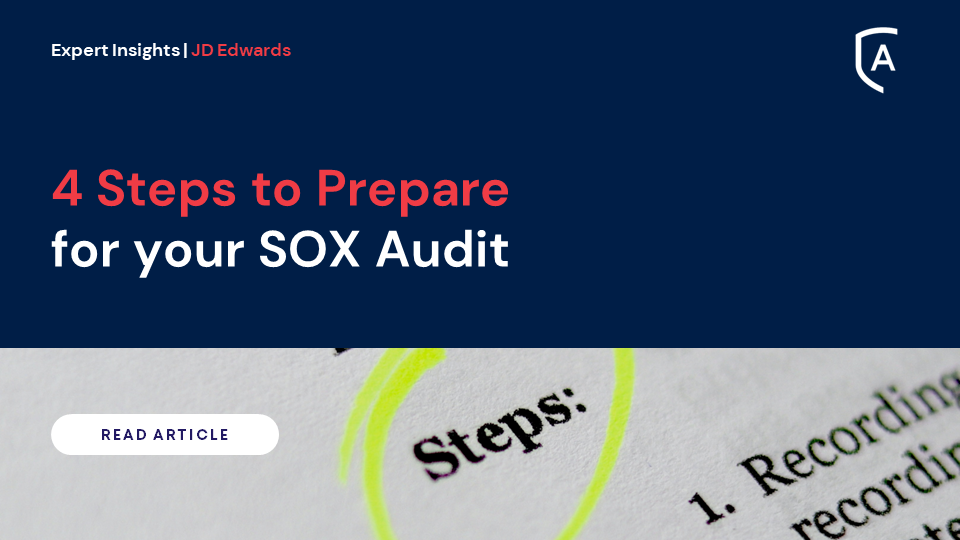
full
center

full
center
Home » Industry Insights »
no-repeat;left top;;
auto
no-repeat;left top;;
auto
The Silver Lining for your Cloud Migration by
no-repeat;left top;;
auto
0px
Cloud migration is on the rise as organizations seek out a higher ROI from their JD Edwards investment. Flexible scalability and deployment options translate into key business incentives: simplified maintenance, reduced costs and lower IT workloads. The continuous adoption model in place makes it easy for customers to integrate product enhancements and feature updates into their JDE environment. In summary, the value-adds of running your business on the cloud are clear. So, what else is there to consider?
Migration Essentials: Security and Compliance Beyond Standard JDE with Zero Downtime
No matter where you are on your cloud journey, building an optimal security environment and meeting compliance goals are primary obligations that fall on your organization’s shoulders. Maintaining business momentum without interruptions while doing so is key! ALLOut’s zero-risk integrated solutions deliver all this and more, helping key decision makers achieve objectives by enhancing and safeguarding business processes.
1.Business as Usual: Seamless Migration Directly in JDE
To ensure business continuity following migration, a JDE security solution must leverage best-in-class compatibility that limits the risk of external data transfer/reconciliation issues, which can disrupt operations.
Rather than replace standard security and controls, ALLOut’s tools work within your JDE environment to enhance security and reporting with greater risk visibility and documented accountability.
1 hour installation for CNCs without JDE downtime.
2.Best Practice Security Strategy for Cloud Infrastructure and Applications
Using standard JDE in the cloud to manage daily security maintenance efforts and system-wide projects is often complex and time-consuming. To overcome this challenge, it is important to invest in a security strategy that frees up precious IT resources, heightens productivity and empowers the business with control ownership.
Streamline security access provisioning with the added benefit of one-time user sign-in.
Assign security to multiple process-based roles while eliminating role-sequencer challenges.
Menu filtering maintained alongside security.
Automate user, role and data clean-up (duplicate or inactive user records).
Accelerate projects with program security, role restructuring and Deny-All implementation tools.
Automate Role and environment –based access change control.
3.Compliance Success for Cloud: Risk Mitigation and Accountability
Report and document change with an end-to-end risk management model that empowers business owners and minimizes unnecessary internal risks. Gain heightened visibility with real-time data to track system activity, detect breaches and help you apply the necessary mitigating controls.
Comprehensive user, role, menu, and business unit access reports.
Predefined and configurable SoD breach reports with alert and review options.
Report on security changes by audit type.
Document report approval, review and sign off via ‘Approver Lists’.
Access change control with risk approval process and documentation.
Track risk exposure with UDO’s and Watchlists.
Achieving More with ALLOut in the Cloud
When embracing a forward-focused approach for your business it is vital to remember the essentials. Secure your cloud-based operations with an Oracle validated solution designed to help all stakeholders achieve core security and compliance objectives without integration complexity.
Discover our industry leading expertise
Industry Insights
4 Steps to Prepare for your SOX audit
Identify your internal business processes
Identify rules (or buy the ALLOut rule set)
Identify conflicts (run ALLOut’s SOD reports)
Remediate (fix) or Mitigate (excuse)




